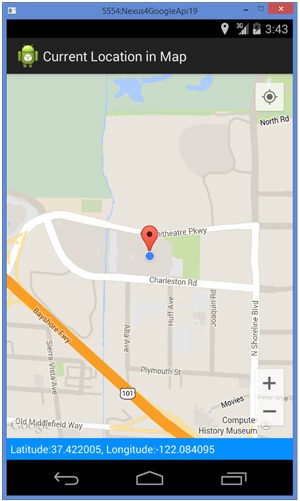

ANDROID STUDIO INTENT API ANDROID
On devices running on Android 11, this won’t be a problem but if you have targeted API level 31 and still not migrated to SplashScreen API, the system will throw a Runtime Exception on Android 12 devices. If you have previously implemented a custom splash screen in Android 11 or lower, you’ll need to migrate your app to the SplashScreen API to ensure that it displays correctly starting in Android 12. Read more about Safe Component Exporting and android:exportedĮarlier most of us used to create a custom Splash screens by using an Activity or setting a window theme on an Activity. įailing to do so might throw a compile time: Manifest merger failed : Apps targeting Android 12 and higher are required \ to specify an explicit value for android:exported when the corresponding \ component has an intent filter defined. In most other cases, set android:exported to false. For example, If an activity in your app includes intent filters, set this element to “true” to allow other apps to start it.įrom API 31 onward, you have to explicitly set a value to this attribute.Ī common rule of thumb is: If the app component includes the LAUNCHER category, set android:exported to true. Keyguard could prevent the notification from being displayed.Whenever you define any component (like Activity, Service and Broadcast Receiver) in the manifest, you must have seen/used some thing like "android:exported"īy default this attribute is set to true, which means that the component can be accessed from outside of your application. Full-Screen Intent on Lock Screen with a Keyguard fun Context.scheduleNotification(isLockScreen: Boolean) private const val LOCK_SCREEN_KEY = "lockScreenKey" 3. Schedule Full-Screen Intent Notification demoĪlarmManager needs a PendingIntent with a BroadcastReceiver. The main difference is that the notification is not built by an Activity but by a BroadcastReceiver to enable scheduling in the future using AlarmManager. Schedule Full-Screen Intent Notificationīuilding the notification is identical to the previous example.
ANDROID STUDIO INTENT API CODE
setPriority(NotificationCompat.PRIORITY_HIGH) // request code and flags not added for demo purposes val pendingIntent = PendingIntent.getActivity(this, 0, intent, 0) tFullScreenIntent(pendingIntent) // THIS HERE is the full-screen intentĭon’t forget to add in your AndroidManifest.xml’s Activity the following as well: 2. setSmallIcon(android.R.drawable.arrow_up_float). val builder = NotificationCompat.Builder(this, channelId). To build the intent we need a pending intent, which can be achieved using PendingIntent. In order to show a full-screen intent, we need to first build the notification and set the full-screen intent to the notification. Notifications with a Full-Screen Intent are less intrusive to the user and there is less chance to break in the future with any API changes.ĭemonstration of the first scenario, showing full-screen intent notification while on the foreground Alarm Clock: An alarm clock can use full-screen intent to either show an activity or a notification with high priority.Incoming call: When there is an incoming call, the system launches a full-screen activity if the phone is locked or shows a normal notification with high priority.Ian Lake from the Android Toolkit team said the following on a Stackoverflow question:įull screen intent has been the recommended best practice for alarms since it was introduced in API 9 and was even more important with the introduction of heads up notifications (where your alarm shows as a heads up notification if the user is actively using their device) When should Full-Screen Intents be used?įull-screen intents were added to the framework since forever and it is the recommended way of launching an activity while the system is locked or busy. (see Restrictions on starting activities from the background) Although this breaks a lot of things, it doesn’t affect full-screen intents. Why should Full-Screen Intents be used?Ī restriction was added with Android Q where an app couldn’t start an activity if not meeting the criteria. In these situations, you can associate a full-screen intent with your notification. Your app might need to display an urgent, time-sensitive message, such as an incoming phone call or a ringing alarm. Well, I guess that needs a bit more explanation so keep on reading.

What are Full-Screen Intents?įull-Screen Intents are Intents that can launch in full-screen and can be used for showing a full-screen notification. Originally shared on my personal blog post.


 0 kommentar(er)
0 kommentar(er)
